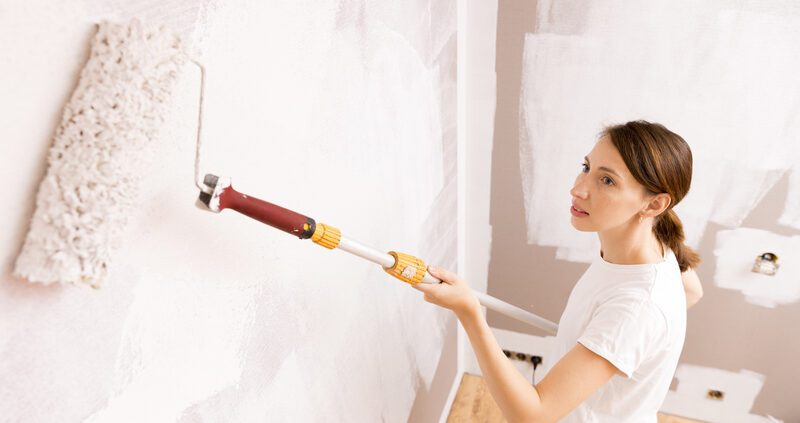Fixes You Need to Make Before Painting Your Walls
Achieving a professional-grade paint job on your walls starts well before the first can is opened. This involves some preparation work which, if done correctly, can ensure a smoother process and more polished end result. Here are three key fixes to consider before embarking on your painting project.
Fix Moisture Damage
Florida’s humid climate can often result in moisture damage to walls, showing up as discolored spots or peeling paint. Tackling this issue before applying a fresh coat of paint is critical. Failing to address moisture damage can result in the new paint bubbling or peeling prematurely, wasting both time and resources. Start by identifying the source of the moisture and rectifying it. This could involve repairing a leaky pipe or installing a dehumidifier. Next, assess the extent of the damage. If it’s superficial, the affected area can be scraped off, cleaned, dried, and then primed. However, severe damage might necessitate replacing portions of the drywall. Once fixed, the wall is ready for painting.
Fill Holes in the Wall
Walls can often become a canvas of life lived, adorned with holes from nails, screws, and the occasional doorknob. Before painting, it’s crucial to patch these holes for a smooth, uniform surface. Filling holes in drywall is a critical repair if you want to sell your home. Prospective buyers look for move-in ready properties, and a hole-free, freshly painted wall can make a big difference. To repair, first clear away any loose debris from the hole. Use a putty knife to apply a patching compound, filling the hole and smoothing it level with the wall surface. Allow the compound to dry, then sand it smooth. For larger holes, you might need a wall repair patch and joint compound. With the holes filled and sanded, the wall is now prepped for painting.
Remove Old Paint
Removing old, chipped, or flaking paint is an essential step to ensure your new paint adheres properly. Not doing so can result in an uneven texture and color. There are a few methods to remove old paint. For minor chipping or flaking, a good scrape with a paint scraper and sanding can do the trick. For more extensive cases, a chemical paint stripper can be used. It’s crucial to use protective gear when working with these chemicals. Once the old paint is removed, clean the wall to eliminate dust or residue. Then, use a primer to create a uniform surface that will not only help the paint adhere better but also enhance its color and sheen.
Starting a paint project involves more than just selecting the right color. Taking the time to prepare your walls – by fixing moisture damage, filling in holes, and removing old paint – can significantly improve the longevity and appearance of your paint job. While these steps may require a bit of elbow grease, the finished result will undoubtedly be worth the effort. The walls of your Florida home will gleam with a fresh, professional-grade finish, ready to impress.
You might also like: What You Can Do With an ADU on Your Property




